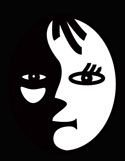
What is a linoleum print?
Linoleum cuts, or linocuts, are made using a piece of linoleum on which the artist draws a design and then carves away the parts of the picture that are not to be printed. The artist works on battleship linoleum, which is not the kind that is used in kitchens today. It is a very thick and pliable material that cuts with a knife or other cutting tool quite easily. For prints with multiple colors, a separate block must be carved for each color.
What is an original print?
An original print is a work of art created by hand and printed by hand from a plate, block, stone, or stencil that has been hand created by the artist for the sole purpose of producing the desired image. The plates or stencils it is printed from bear no resemblance to the finished work of art, which means it is not a copy or a reproduction of anything. Each print produced is technically a unique work, although produced as a signed and numbered multiple.
Original prints are traditionally signed in pencil by the artist. They are numbered to indicate how many prints there are in the edition and to identify the individual print. The number appears written as a fraction, for example: 34/75. The number to the right of the slash (in this example, 75) indicates the size of the edition. The number to the left is the actual number of the print. The artist traditionally keeps a separate group of prints aside from the edition marked as artist's proofs, normally about ten or less. These are marked A/P.
Giclée prints
Often, artists sell "prints" of original works (often paintings), for much cheaper than the original. These are often giclée prints, a type of color copy produced with the aid of a computer on a large, special inkjet printer. They are just a copy of an original hand-made piece, whereas a linoleum print is the original work.
My process
- First, I draw my image on paper.
- Next, I transfer my pencil drawing to the plate by running it through the press, which reverses the image. When it is printed, it will be reversed again, to match the original drawing.
- I outline my drawing and mark in the areas I want to cut.
- I carve the plate using a linoleum cutter; the areas I want to be white are removed.
- I ink the plate; the raised areas on the plate are now the color of the ink.
- I put the plate on the press, put paper on top, and run it through the press.
- Finally, I let the print dry and add hand-painted watercolor accents.
For multiple-block colored prints:
- The process is the same as for black & white images, except that I do each step with three plates per print, each with a different color. These three must align to produce the final image.
- When printing, I do not let the print dry between colors in order to let the colors blend into each other.
